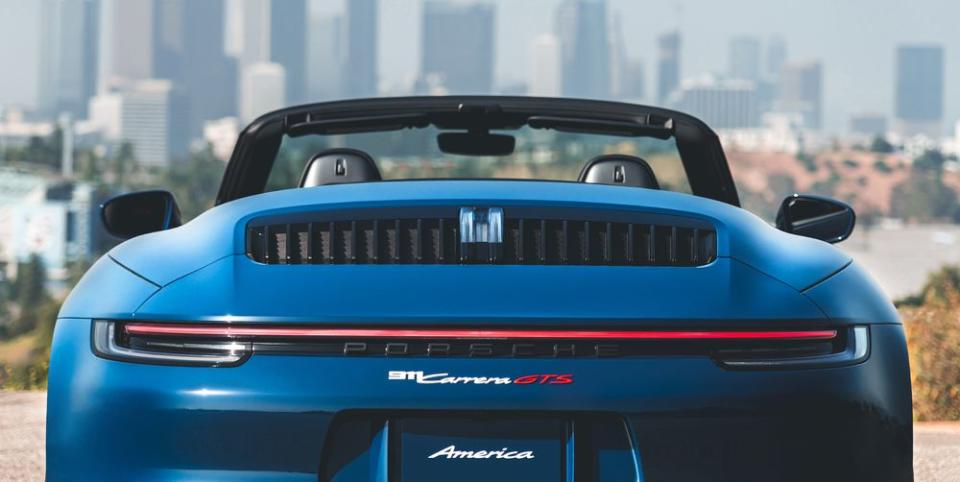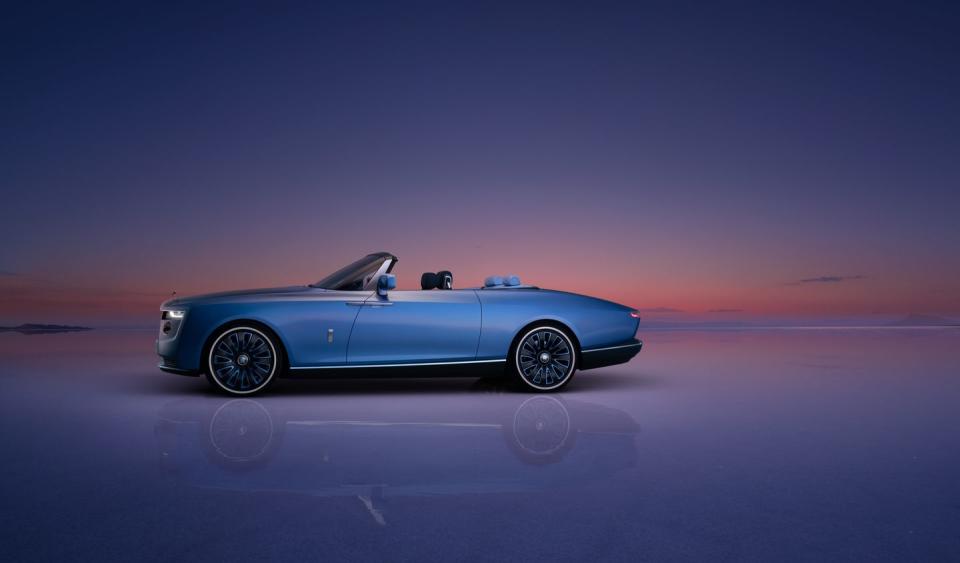Vehicle Design Trends That Are Here Today, Gone Tomorrow

Every new styling cue comes with its own expiration date, and even with the best it’s just a matter of time before the freshness fades.
Horizontal taillamp bars, black wheels, and flying roofs are three design trends that have grown increasingly popular in recent years.
Really, how could anything that is fashionable be anything else? Still, the author takes solace from the great vehicle designs that seem to shrug off the test of time.
Many years ago, when I was still a young designer at General Motors, the vice president of design told me—maybe in a moment of frustration—that design was basically a fashion business. For a naïve designer still believing that great design could be timeless, this was very disturbing. I couldn’t believe what I was hearing.
But of course, he was right.
To be sure, great design can be timeless, but most manufacturers are understandably more interested in selling product than producing art. And to that end, it’s in their best interest (in more ways than one) to produce designs that are current, or even trendy.
What is current and modern today inherently becomes outdated. Every new styling cue comes with its own expiration date, and even with the best it’s just a matter of time before the freshness fades.
But given the life cycle of most vehicles, designs now past their former glory will simply be replaced with the latest, newest offering.
Think back. How many design cues and themes that once seemed ubiquitous and fashionable are now just fodder for collector car magazines and YouTube videos? Remember tail fins? If those are too far back, how about hidden headlamps? Opera windows? There was a time when any domestic sedan with luxury aspirations had fender skirts. “What’s a fender skirt?” ... “What’s a sedan?”
So let me suggest some current, fashionable design cues that are also destined to run their course. While they may never totally disappear, time is not on their side.
Black Wheels
I will admit when first introduced, the graphic impact of black wheels in the right context was strong. And at first, also distinctive as they seemed to be reserved for performance vehicles. But now they’re on everything.

What troubles me is that they can disguise the diameter of the wheel (just upgraded for those 20-inchers, who can tell?). And black rims tend to reduce the perceived depth—and flatten it—because they work mostly as a 2D statement. Remember, you’re still paying for alloy wheels, a material that can be polished, brushed, and machined in a way that highlights its potential visual qualities.
A vehicle’s wheels play an important—perhaps underappreciated—role as a design element, helping reinforce its character along with providing an opportunity for differentiation and invention. With this in mind, it just seems a shame to paint them all black.
Flying Roofs
I’m not sure if there’s a more technical or design-y name for this, but what I’m referring to is the roof of a vehicle visually detached or floating separately from the C- or D-pillars.

The goal seems to be to generate a more interesting side glass graphic, for example, in the case of the GMC Terrain, or with the Nissan Murano—one continuous sweeping curve depicting the roof from the A-pillar rearward, with the rear quarter providing an interesting kick-up uninterrupted by a D-pillar.
The Lexus RX has a different execution, separating its upper at the base of the pillar, unlike others that do it at the top, with the effect of the roof flowing downward to the D-pillar, nearly creating the illusion of a fastback sedan.
While all these vehicles give the impression of continuous and expansive side glass, the reality is they all compromise the driver’s rear quarter visibility. Still, it’s a pervasive look for crossovers and SUVs, with vehicles from Chevrolet, Kia, Hyundai, and others having their own variations of the theme. Very stylish.
Horizontal Taillamp Bar
While not a brand-new idea, lighting technology has evolved to the point where the latest batch of these are intense, very thin light strips. And they are appealing, lending a very clean, precise look while also providing added visual width to the rear.

Porsche uses it on the current 911, as well as the Taycan and variations for the Cayenne and Macan. There’s nothing wrong with reinforcing a family resemblance. Both Mercedes-Benz and Audi are using similar themes to identify their electric vehicles.
Lincoln has been using it on SUVs, and the new 2023 Toyota Prius has it as well. EV startups Lucid and Rivian have both seen fit to put it on their introductory vehicles. They all seem to embrace the trend regardless of vehicle cost or type, at least for the time being.

And so, this really is part of the design business, and certainly not just for cars—it’s both temporary and a bit superficial.

But really, how could anything that is fashionable be anything else?
While I take solace from the great vehicle designs that seem to shrug off the test of time, I will wait for the next design trend sweeping across the automotive industry—fleeting though it may be.
Dave Rand (pictured above, right) is the former executive director of Global Advanced Design for General Motors.
Are there any vehicle design trends from the past that you think could be resurrected today? Please comment below?

 Yahoo Autos
Yahoo Autos